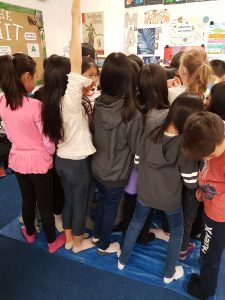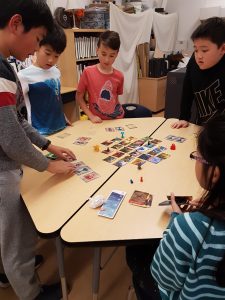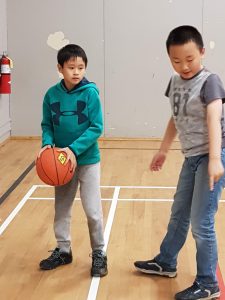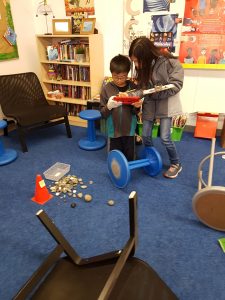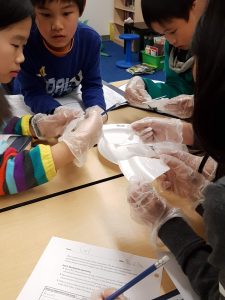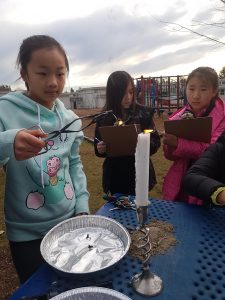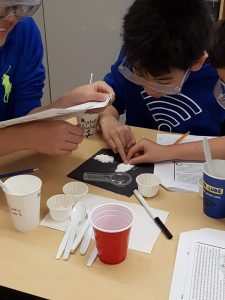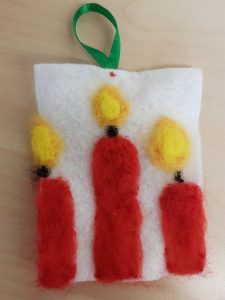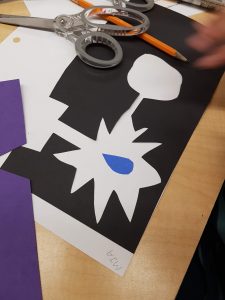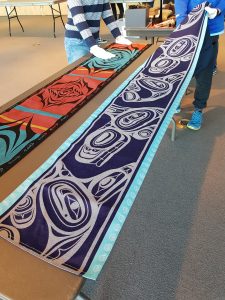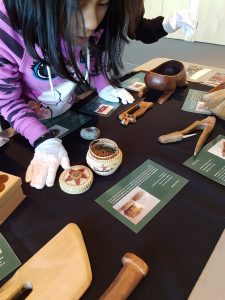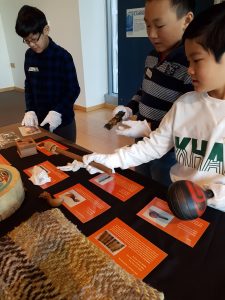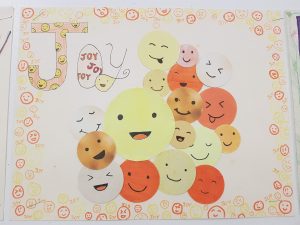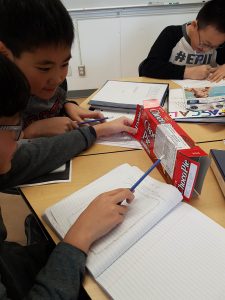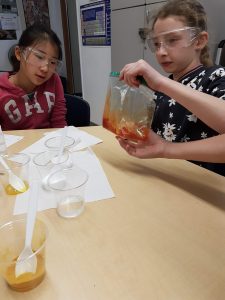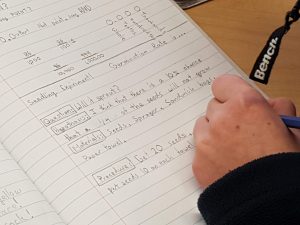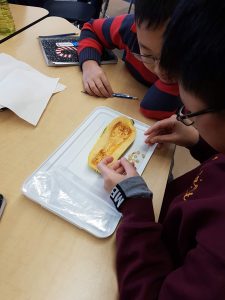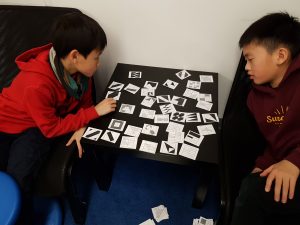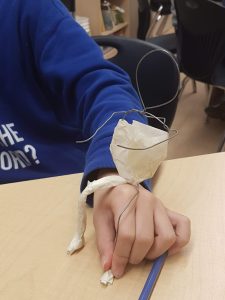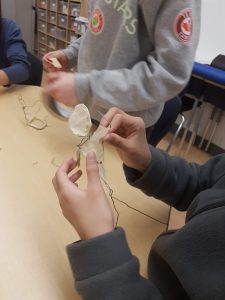Overview Term Two: Great Work Division 5!
Hello Everyone!
As we participate in learning conferences this week, here’s a quick review of the many things we have done during term two!
To tie the many big ideas from our curriculum together into a larger, enduring understanding, we studied subject areas through the lens of universal, conceptual themes.
In late December, we focused on the concepts PERSPECTIVE and PROBLEM SOLVING in our unit SOLVING THE CONUNDRUM.
Our unit focus statement was: Problem solving involves careful observation, critical thinking, and consideration of multiple perspectives.
What are the skills you need to solve a problem?
We began our unit with cooperative games and challenges, both in the classroom and during gym, to explore the variety of curricular and core competencies required to solve a problem. Our main focus was on critical thinking, but we also used communication, creative-thinking, and personal-awareness skills.
One of our favourites was playing the game Forbidden Island, which is unique because everyone has to work as a team, rather than against one another, to get the treasures and escape from the island before it sinks into the water! Everyone did a great job playing together, using communication and critical-thinking skills!
We were also challenged to “code” a partner during basketball practice in gym! The partner pretended to be a robot that needed explicit instructions for every step needed to make a successful basket. It was hard to make your robot cooperate!
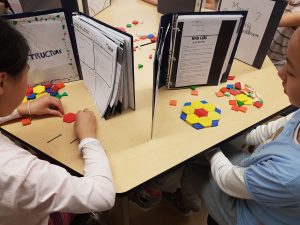 Other problem-solving activities included: Guess That Word!, Blanket Flip Challenge, Communicate Your Shape, Ball Keep Away, Ozobot Path Challenge, and more.
Other problem-solving activities included: Guess That Word!, Blanket Flip Challenge, Communicate Your Shape, Ball Keep Away, Ozobot Path Challenge, and more.
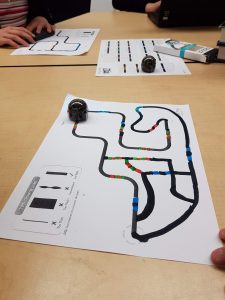 After finishing challenges, we reflected as a group on the skills needed to be successful, such as active listening with partners, careful consideration of instructions and perspectives, self-regulation, and the ability to stay calm when you don’t know the answer right away or something unexpected happens. We also reported on the types of skills we were using in our e-portfolios.
After finishing challenges, we reflected as a group on the skills needed to be successful, such as active listening with partners, careful consideration of instructions and perspectives, self-regulation, and the ability to stay calm when you don’t know the answer right away or something unexpected happens. We also reported on the types of skills we were using in our e-portfolios.
What skills do you need to solve a crime?
Math and Science in Problem Solving!
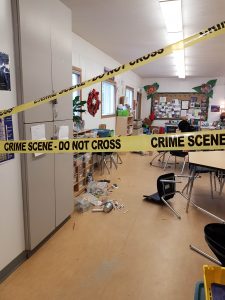
Oh no! A crime happened in Division 5! Ms. D’s precious rocks were stolen! Well, not really, but we set up a pretty fantastic practice crime scene, practicing our observation, communication, thinking, and technology skills to carefully document a crime scene!
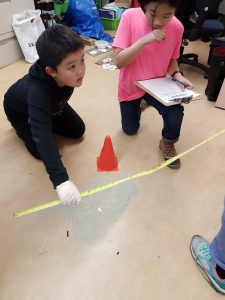 We also had to use our math skills, because accurate measurement is required to document where items are located within a crime scene space.
We also had to use our math skills, because accurate measurement is required to document where items are located within a crime scene space.
So, we gathered evidence, took notes, and carefully measured each of the marked evidence locations from two reference points in the room. Then we did a myriad of other lab experiments to practice being forensics investigators just like on CSI. We even had the B.C. Coroner’s Office Team come and visit to tell us about their work! We completed hands-on labs about fingerprints, dental impressions, measuring bones to determine someone’s height, analyzing bullet holes in windows, and watching for physical and chemical properties to identify substances and fabrics left at the scene.
We practiced our CSI Math skills in You Do the Math Solve a Crime, using math knowledge about coordinates, graphing, area, adding and subtracting decimals, fractions, word problems, and more to do some of the same math a CSI agent would do!
CSI is all about solving problems, and we discussed strategies used to solve word problems. Using Word Problems in Literature by Denise Gaskins, we applied Singapore visual diagram strategies to break down information visually, so it could be more easily understood. We enjoyed solving problems from The Hobbit and The Lord of the Rings! We also worked collaboratively on math challenges to get out alive in Perilous Math Problems! Great work, Division 5, we escaped! Whew!
Writing a Mystery!
We put our CSI knowledge to work and wrote fantastic mystery stories! First, we analyzed mystery stories we already knew and watched Scooby Doo to identify the parts of a typical mystery such as the suspects, the victim, the clues, the red herring, the alibi, and more. We also learned how to use proper punctuation in dialogue, because no story is complete without some interesting characters and conversations. Everyone did a great job producing creative stories, and we edited them carefully after receiving teacher feedback. Next step is to share them with one another!
Applied Design, Art, and Maker Problem Solving!
Leading up to the holiday, we put our problem-solving skills to the test, finding ways to make creative, unique ornaments and holiday gifts through a variety of mixed media and new materials. Everyone learned how to do wool felting, creating amazing pictures to share with our community. Thank you Division 5 for also taking the time to share your skills by teaching our younger buddies how to make ornaments, as well.
We continued to focus on the elements and principles of art, and one of our problem-solving challenges involved making a picture, thinking about how line, shape, and colour communicate specific messages or a story. We looked at the book Picture This! for inspiration. Thank you everyone for your creative work!
Small problem or big problem?
Social-Emotional Learning & Social Studies
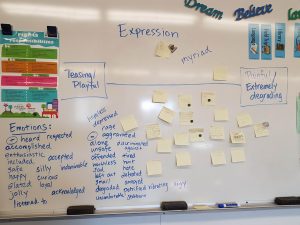 We explored the difference between small problems and big problems in our everyday lives. We discussed how to identify a problem and strategies for solving minor conflicts amongst peers. I appreciated how students contributed to our lesson on “Words that Hurt” as we categorized language we had heard on the playground or in our community as either playful talk between friends or very hurtful words.
We explored the difference between small problems and big problems in our everyday lives. We discussed how to identify a problem and strategies for solving minor conflicts amongst peers. I appreciated how students contributed to our lesson on “Words that Hurt” as we categorized language we had heard on the playground or in our community as either playful talk between friends or very hurtful words.
We made a commitment to become more aware of how words can hurt, even if the person who said them didn’t mean to hurt anyone. This was part of learning perspective.
This led to a larger exploration of the history of discrimination in Canada. Students participated in discussions about human rights and ethics. They investigated the history of residential schools, Japanese internment in World War 2, the Komagata Maru incident, and the Chinese head tax. Thank you everyone for the research and paragraphs you wrote on your e-portfolios.
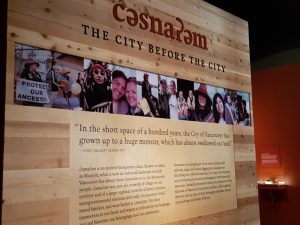
To help us understand reconciliation, we visited the “City Beyond the City” exhibit at the Museum of Vancouver, which explains the history of the Musqueam and their village on what is now the Fraser River in South Vancouver. We learned their history, and we practiced being museum curators, categorizing and displaying important belongings to tell the story of the Musqueam.
We also enjoyed being outside, completing a scavenger hunt to learn more about Vancouver’s history through sculptures by the waterfront!
We incorporated social-emotional learning frequently into our discussions, talking about how to apply problem-solving methods to situations at school, how to care for our community, how to see another person’s perspective, and the emotions and needs that drive behaviour so we can better understand why people do the things they do! We took a survey to understand our own needs, did some problem-solving brainstorms around conflicts, and took time to use the RULER coloured quadrant method to talk about our emotions. We will keep having these conversations throughout the year.
I loved how the class created their own version of the ABCs of Life, or How to Be Happy, using art skills to draw illustrations for the advice they wanted to share on how to be happier!.
FINALLY, we made efforts to solve our own problems!
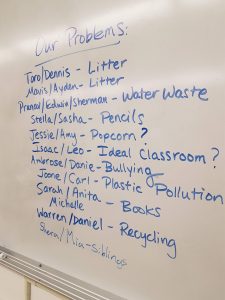 Students chose problems in their lives, classroom, school, or community they wanted to solve. The emphasis was on following a problem-solving process and picking a method to solve the problem — INNOVATE, INVENT, or CAMPAIGN — based on the UN Global Goals Initiative.
Students chose problems in their lives, classroom, school, or community they wanted to solve. The emphasis was on following a problem-solving process and picking a method to solve the problem — INNOVATE, INVENT, or CAMPAIGN — based on the UN Global Goals Initiative.
They needed to identify a problem, find out the perspectives on the problem through conversation and research, brainstorm solutions, weigh the pros and cons of each solution, pick a solution, make a detailed plan, and try to implement it. I am proud of the many things Division 5 tried to take on during this project! While some groups have finished their solution, others are still working on the implementation, because their ideas were more complicated or involved. We look forward to each of you finishing your plan before end of year!
_____________
In late January, we changed our focus to the concept of POWER in the unit COMMUNICATION IS THE KEY!
Our unit focus statement: Being an educated citizen requires reflection and critical thinking about how we communicate and receive information.
What is media and how can we gain personal POWER by being educated about it?
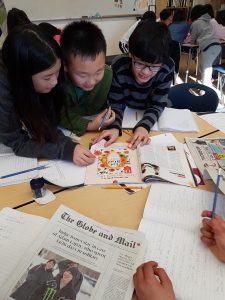
We reviewed a variety of media local newspapers to see how their construction, content, advertisements, audience, and reading level were different. We discussed what it means to be media literate, started taking greater notice of how much time we were spending with media, and discovered how it is present everywhere in our lives.
We compared the outside appearance of cereal packages, looking at how companies market products to children with bright colours, cool characters, games, and other gimmicks!
We looked at media advertisements to see what kinds of gimmicks were being used to make us want to buy products. We played games on the Canadian Media Literacy 101 website together to practice recognizing gimmicks in both print ads and commercials.
We became more aware of how to search for information online, avoiding commercial websites and looking for reliable sources not full of advertisements or false information. We discussed digital citizenship, learning how online games and social media collect personal information about us while we are having fun online! We played the game Data Defenders to practice NOT giving our information away, keeping our identities safe.
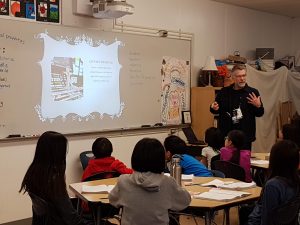 We had a visit from Scott Hinde, a contractor for Global TV, who is a technical director for events like Variety Telethons, Olympics curling events, hockey games, and more. We learned a lot about subliminal advertising and became more knowledgeable of how commercial products are present everywhere in media, not just in commercials!
We had a visit from Scott Hinde, a contractor for Global TV, who is a technical director for events like Variety Telethons, Olympics curling events, hockey games, and more. We learned a lot about subliminal advertising and became more knowledgeable of how commercial products are present everywhere in media, not just in commercials!
How do we communicate our learning? Why is being able to communicate your ideas well important in all fields? Focus on communication skills!
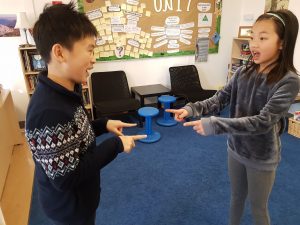 We played several games to focus on communication skills, such as ordering fractions or decimals collaboratively on a clothesline, playing the game telephone, or doing drama games in gym such as “Guess Who is the Leader!” We reviewed active listening skills, and we talked about what makes a great “radio announcer” voice with clear tone, enunciation, volume, and enthusiasm. We practiced real radio scripts so we could get a taste of being announcers ourselves!
We played several games to focus on communication skills, such as ordering fractions or decimals collaboratively on a clothesline, playing the game telephone, or doing drama games in gym such as “Guess Who is the Leader!” We reviewed active listening skills, and we talked about what makes a great “radio announcer” voice with clear tone, enunciation, volume, and enthusiasm. We practiced real radio scripts so we could get a taste of being announcers ourselves!
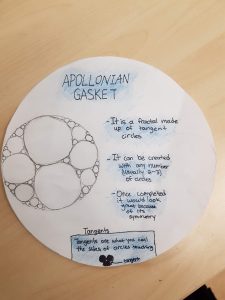 We communicated our ideas in a poster about our learning around math conjectures, and we campaigned using posters and PowerPoint presentations to help solve problems. Then, we reflected on our e-ports about our presentation skills.
We communicated our ideas in a poster about our learning around math conjectures, and we campaigned using posters and PowerPoint presentations to help solve problems. Then, we reflected on our e-ports about our presentation skills.
Using the scientific method or procedure to communicate and document our science experiments and explorations!
We did three different experiments, focused on chemical reactions and seed germination, to practice using the scientific method accurately. We took careful observations as we made new substances like limestone out of baking soda and calcium carbonate! And we designed experiments to test the ideal conditions for seed germination. This was great practice, as many of us may want to use a science experiment as part of our term three independent project.
How are numbers used to communicate ideas in media?
We analyzed news articles on a variety of topics to see how math, particularly graphs, fractions, decimals, and percentages, are used to communicate ideas. We talked about how to recognize a “tricky graph” that may have been manipulated to back up someone’s point of view. If you see numbers, does that mean the information you see is automatically FACT and not someone’s OPINION?
We did lots of great practice around fractions and decimals, playing Fraction Wars, Fraction Concentration, Fraction Capture, making clotheslines to order decimals and fractions, analyzing seed packages for seed germination rates, and more!
Making conversation is an important reason to learn a foreign language!
Ms. D challenged everyone to actively learn basic conversation in French, and we used a variety of songs and French videos to help us practice. We wrote mini conversations with friends, and our next step is to venture out and talk to someone who speaks French in our community! Great work everyone!
Sculpture and Drama as Forms of Media
 In gym, we explored how the body communicates so much beyond words through active drama lessons. We found “neutral” positions in our bodies, and then we gradually added layers of movement. We moved at different levels, high, medium, and low. We led with different parts of our bodies. We walked and moved in different kinds of lines like wavy, zig zag, and straight. Eventually, we made some very cool characters and created frozen museum statues, sharing a gallery of creatures with one another. Ms. B also taught us yoga, which allowed us to become more aware of our bodies and of another way to relax and be mindful.
In gym, we explored how the body communicates so much beyond words through active drama lessons. We found “neutral” positions in our bodies, and then we gradually added layers of movement. We moved at different levels, high, medium, and low. We led with different parts of our bodies. We walked and moved in different kinds of lines like wavy, zig zag, and straight. Eventually, we made some very cool characters and created frozen museum statues, sharing a gallery of creatures with one another. Ms. B also taught us yoga, which allowed us to become more aware of our bodies and of another way to relax and be mindful.
We also explored shape and form through sculpture in art. We went over the history of sculpture and how it, too, is a form of media, communicating a message. Each person then created their own sculpture out of steel wire, masking tape, newspaper, and acrylic paint. It was a longer project, but the result is well worth it.
Making Suncrest News!
Finally, we are all working together to create a news broadcast. Each person is writing a news story, and our goal is to try and complete the actual broadcast for our student-led conferences. Stay tuned! If we need more time, we will let you know how we will post it for you to see.
MUSIC at Suncrest!
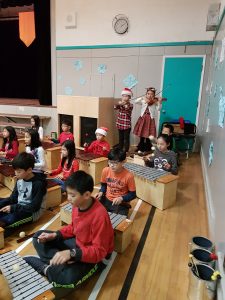 Ms. Fletcher has more on her blog, but I also wanted to applaud Division 5 on their beautiful music! Ms. Fletcher wrote: “In class, students have been exploring elements of beat, rhythm, tempo, pitch, and form through playing music individually and collaboratively on Orff instruments and boomwhackers, and learning to read music notation and play the recorder. Students also learned dances and music for our Lunar New Year Celebration.”
Ms. Fletcher has more on her blog, but I also wanted to applaud Division 5 on their beautiful music! Ms. Fletcher wrote: “In class, students have been exploring elements of beat, rhythm, tempo, pitch, and form through playing music individually and collaboratively on Orff instruments and boomwhackers, and learning to read music notation and play the recorder. Students also learned dances and music for our Lunar New Year Celebration.”
Thank you students for being leaders, participating in our School Choir, serving as MCs, or dancing during assemblies. We appreciate the extra time you spent rehearsing during lunch times!
We did even more than all of this, but hopefully this gives everyone a clear picture of what we did. Please see our e-portfolios for more information. I will send everyone a Google link to additional photos from our term I am not able to post online. Thank you!

